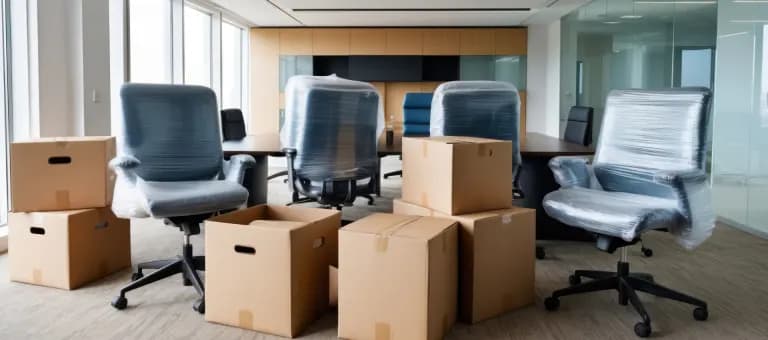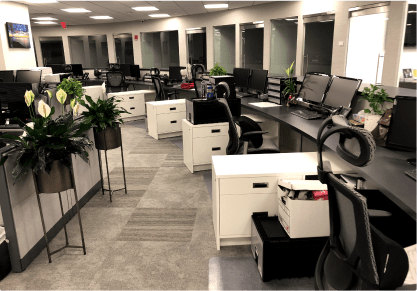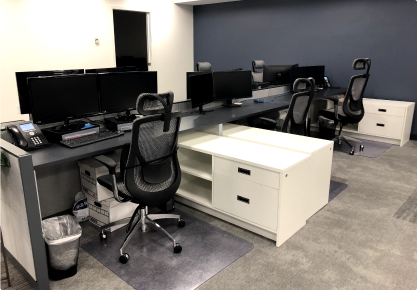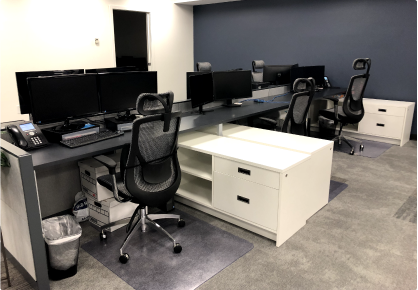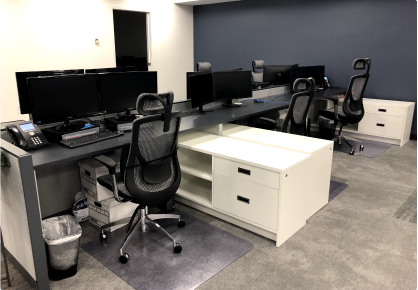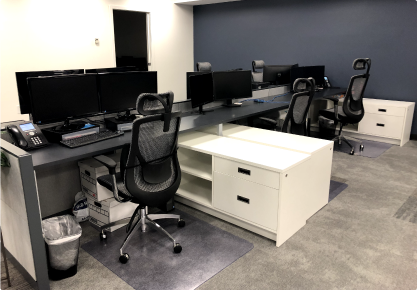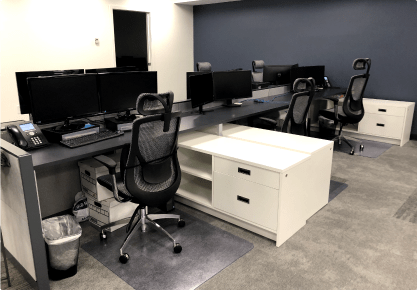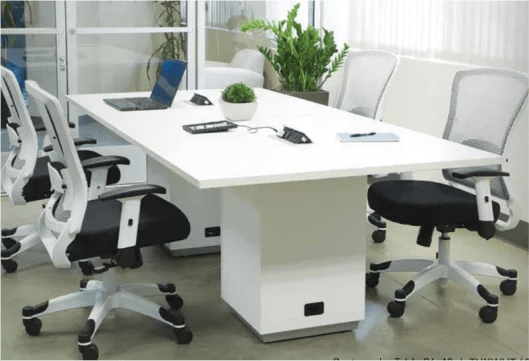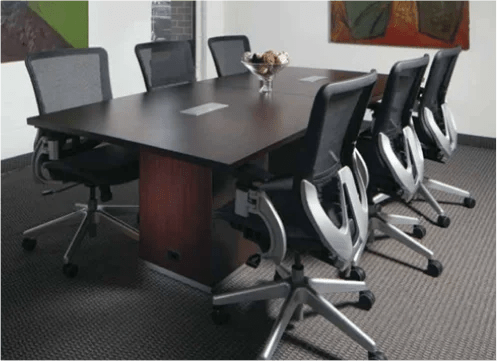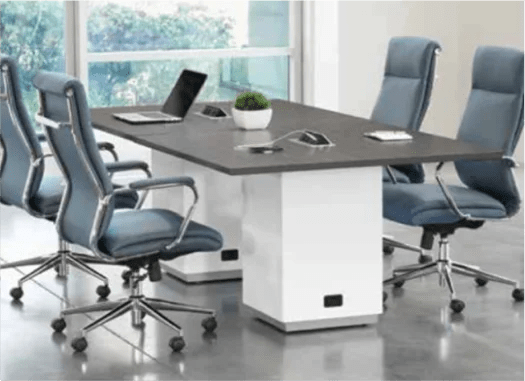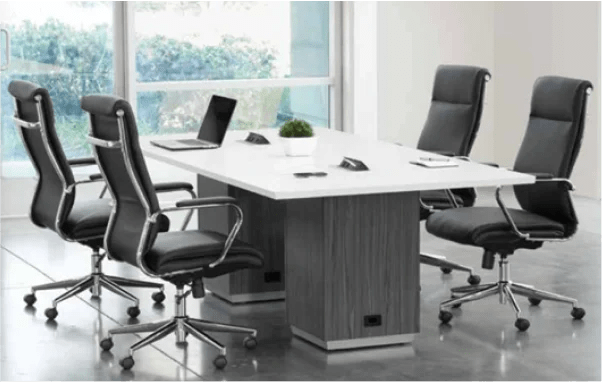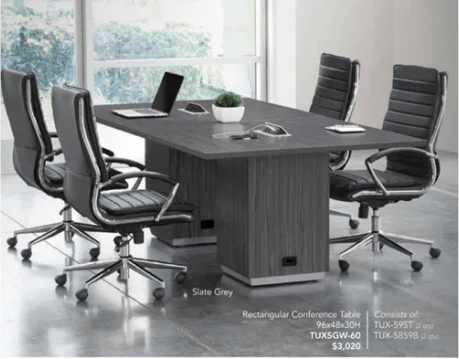Sustainability Meets Style: The Role of Pre-Owned Furniture in Office Design
Sustainability Meets Style: The Role of Pre-Owned Furniture in Office Design
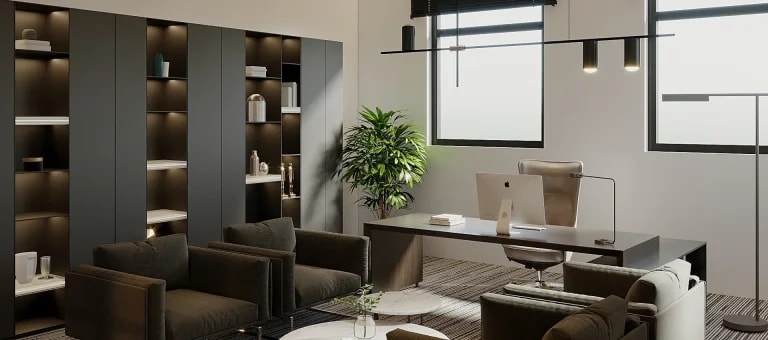
The growing need for environmentally responsible solutions is driving a transformation in office design, where sustainability and style are no longer mutually exclusive. Pre-owned office furniture is emerging as a key solution for businesses looking to reduce their environmental impact while maintaining a high standard of aesthetics and functionality in their workspaces. In this blog, we’ll explore the environmental impact of the office furniture industry, the benefits of incorporating pre-owned items, and how a holistic approach to design and logistics can help companies achieve a more sustainable future.
1. The Environmental Impact of Office Furniture: Why It Matters
The office furniture industry is a significant contributor to environmental degradation. The average lifespan of most office furniture is only 10-15 years, leading to frequent replacements and substantial waste generation. In the United States alone, office furniture landfilled has increased by over 300% since 1960, according to the Environmental Protection Agency. This has led to the loss of millions of tons of raw materials each year, as traditional practices in the industry often prioritize new production over reuse and upcycling.
With the global office furniture market expected to grow at a compound annual growth rate (CAGR) of 6.2% from 2021 to 2028, the pressure on natural resources will continue to increase unless sustainable alternatives are embraced. Today, businesses are becoming more aware of their role in addressing these challenges, opting for environmentally friendly practices that can significantly reduce their carbon footprint.
2. Benefits of Pre-Owned Furniture: A Sustainable Choice
Pre-owned furniture offers several advantages that align with sustainable business practices:
Reduced Environmental Impact:
Choosing pre-owned items eliminates the need for new production, thereby saving raw materials, reducing emissions associated with manufacturing, and cutting down on transportation costs. Upcycling, in particular, transforms discarded pieces into functional and stylish new items, diverting waste from landfills and extending the lifecycle of furniture.
Cost Efficiency:
Pre-owned and refurbished office furniture is often more affordable than brand-new pieces, allowing businesses to invest in high-quality items at a fraction of the price. This approach is ideal for companies looking to achieve a premium aesthetic without the environmental costs associated with new furniture.
Customizable and Unique Designs:
Contrary to the misconception that used furniture lacks style, high-quality pre-owned pieces often feature timeless designs that can be customized. With in-house upholstery services, businesses can modernize older items to suit contemporary aesthetics, ensuring that style is never compromised in the pursuit of sustainability.
3. Creating a Seamless Transition: The Role of In-House Logistics and Project Management
Implementing a sustainable design strategy involves more than just selecting pre-owned furniture. It requires a comprehensive approach to logistics, project management, and space planning:
Project Management Support:
A dedicated project management team can handle all aspects of office design, from concept to execution, taking the burden off businesses. By coordinating deliveries, managing installations, and ensuring quality control, the process becomes streamlined and efficient, minimizing disruptions to business operations.
Logistics and Smooth Transitions:
Timely delivery and setup are critical to ensuring that the implementation of sustainable furniture solutions does not negatively impact the daily workflow of a business. An in-house logistics team, such as the one at eLtru Group, can provide specialized services tailored to meet the unique needs of each client, ensuring that the transition to a sustainable workspace is smooth and hassle-free.
4. Trends in Sustainable Office Design
The demand for sustainable office furniture is growing rapidly, driven by both environmental concerns and changing workplace dynamics. Key trends include:
Eco-Smart Workspaces:
Businesses are shifting towards “eco-smart” workspaces that prioritize sustainable materials and energy-efficient designs. By choosing furniture made from recycled plastics, organic materials, and FSC-certified wood, companies can create spaces that reflect their commitment to environmental responsibility.
Modularity and Flexibility:
Modular office furniture is gaining popularity due to its ability to adapt to changing office layouts and functions. This versatility reduces the need for constant replacements, promoting long-term sustainability and cost savings.
Emphasis on Employee Well-Being:
Non-toxic materials, ergonomic designs, and improved indoor air quality are becoming priorities, as companies recognize the impact of the built environment on employee productivity and health.
5. Building a Sustainable Future: Making a Positive Impact
Embracing pre-owned office furniture is not just a trend—it’s a crucial step toward building a more sustainable future. As businesses continue to prioritize environmental responsibility, the use of upcycled and repurposed items will play a pivotal role in reducing waste and promoting circular economy principles. Companies that adopt these practices not only reduce their ecological footprint but also set a positive example for the industry.
By integrating high-quality pre-owned furniture into their office designs, companies can create stylish, functional, and eco-friendly workspaces that align with their sustainability goals. With the support of experienced partners like eLtru Group, businesses can transform their workspaces into spaces that reflect their values, enhance employee well-being, and contribute to a healthier planet.
https://eltru.com/staging/staging/blog/sustainability-meets-style-the-role-of-pre-owned-furniture-in-office-design/Contact Us For
OFFICE SPACE SOLUTIONS
and FF&E Services
Copyright © 2026 RJV Office Furnishing LLC

